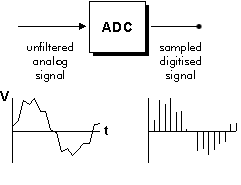

The cookies we use can be categorized as follows: Strictly Necessary Cookies: These are cookies that are required for the operation of or specific functionality offered. To enable browser based Java Applets, read our FAQ. The latest version of the Java Applet Plugin is required to run this design tool. No special issues are known to exist with this calculator at this time.

Quickstart: Compare the effects of maximum analog filter with low oversampling with a more moderate filter, with higher oversampling. Changing the oversampling ratio multiplies the Max Input Frequency to get a Sampling Frequency but the reverse direction doesn't work - it's sampling frequency that's important and the oversampling ratio menu is just a convenience. A summary of the RMS average suppression over the passband is immediately below the chart.Įxperiment by changing the analog filter parameters and comparing the results to changing the Oversampling Ratio. Suppression in dB is shown on the left vertical axis with the corresponding Equivalent Number Of Bits (ENOB) shown at right. (Note: 32X the sampling frequency is usually plenty and the applet will slow down if too much noise BW is specified) Combined noise is summed from DC to the frequency specified by Noise BW. The combined filter response of the analog and digital filters is shown in green.Ĭombined aliasing noise is shown in dark blue with the first three contributing folds in light blue. * Please note that for speed of computation, digital filter characteristics are those of a BT-transformed IIR filter. The default example places the analog corner at 2X the maximum frequency of interest to minimize potential phase distortion in the passband. A red cursor marks the digital filter corner frequency and purple the analog corner. Behavior of this hypothetical ADC is assumed frequency-independent, so only frequency ratios matter - the units must be uniform, but are otherwise irrelevant. Select Digital and Analog Corner Frequencies. (The maximum input frequency is marked with a black line.) Hit "Enter" or click "Update" to recompute the display. For simplicity, the additional aliasing noise that results from downsampling the sampled signal is not shown.Įnter the Maximum Input Frequency, Sampling Frequency and Oversampling Ratio in the fields Digital filtering can then be used on the sampled signal to eliminate frequencies between passband and Nyquist. Instead, oversampling must be used to put enough octaves and attenuation between the Nyquist frequency and the highest passband frequency of interest. By default, that multiple is 32X the maximum is 256X.Īliasing suppression in oversampled systems is achieved through a combination of analog and digital filtering, but digital filtering cannot replace a high-quality analog filter because it cannot remove aliasing noise after it's been folded into the passband by the sampling process.

The bandwidth limit for the input white noise signal is a multiple of the sampling frequency. In many real-world situations, the out-of-band signal is of lesser amplitude and so this estimate is too conservative in other cases it might not be conservative enough - it depends on the out-of-band signal level. For the simple case of an input composed of bandlimited white noise, this applet gives an estimate of how much out-of-band signal will be folded into the baseband (1st NZ). The finite rolloff of practical analog filters means there are always some undersampled high frequency components that fold into the passband, or "Nyquist Zone" (NZ), and appear in the sampled signal as noise. The input signal is also assumed to be noise free, but the most practical use of this applet is to find a combination of filtering and oversampling that pushes aliasing below the noise floor of the input, or the system overall. in order to focus solely on aliasing effects. An ideal ADC is assumed - distortion free, unlimited bandwidth, etc. The applet above illustrates aliasing and its suppression through filtering and oversampling in a classic (non-sigma-delta) A/D converter.


 0 kommentar(er)
0 kommentar(er)
